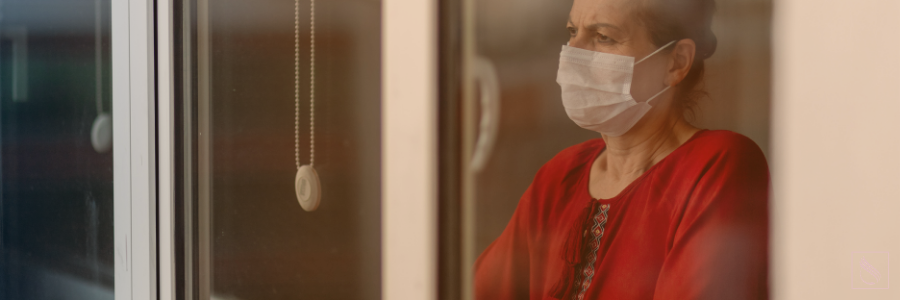In recent weeks and months, churches and schools have wrestled with plans to return to in-person services and classes. It’s not as simple as choosing a date to open. Any strategy to resume live events and classes must include guidance and policies to keep people safe.
What is Possible Virus Exposure?
Let’s start by defining a possible exposure. It is if you have close, physical contact with someone who tests positive for COVID-19 or is believed to be positive. This includes any contact with the person two days before the onset of symptoms or, if they are asymptomatic, two days before the date of their positive test for COVID-19. Once this happens, the United States Centers for Disease Control and Prevention (CDC) and the Canadian Public Health Agency both recommend a quarantine or self-isolation.Several factors can impact this exposure, including duration of contact and physical proximity. The guidance from public health officials is more than 15 minutes of contact at less than six feet of distance can contribute to community spread of the disease. However, the type of interaction also matters. Physical contact or if the person coughs or sneezes can reduce the amount of time necessary for transmission.
When Exposure Happens
When exposure occurs, follow the local Health Department guidelines for your area. You may be able to call the COVID-19 Hotline for immediate advice. The general recommendation for anyone who has been in close contact with someone who tests positive for COVID-19 be tested immediately. They must also quarantine at home for 14 days after their last exposure to that person. Individuals who develop COVID-19 symptoms should quarantine as well, in isolation if possible, for 14 days from the onset of symptoms or until they receive a negative test result.For schools, this may mean transitioning back to distance learning. Any classroom where a possible exposure may have occurred should follow public health guidelines for quarantining. It may be necessary for other classrooms or even the entire school to revert to online classes if there is a possibility of transmission to other classrooms.
During this quarantine, you should plan to conduct a full cleaning and disinfection of the building spaces where the positive person spent time. This includes the sanctuary, classrooms, bathrooms, and other public areas. Be sure to use cleaning products, and disinfectants recommended by the Environmental Protection Agency (EPA).
Communication
Suppose you need to suspend in-person classes or services. In that case, you must communicate with everyone who was in attendance and could be affected. Remember that medical information, including testing positive for COVID-19, is private information. You can say that a member of your community has tested positive or has a possible exposure, but you may not reveal their name. You should also share the dates of the individual’s onset of symptoms or date their test was administered.As with any crisis communication, writing this type of communication ahead of time allows for quick turnaround times in sending out notifications. You can create a template that only needs to be updated or modified to fit each scenario. Additional information to include is why you are suspending in-person gatherings, how long you anticipate using virtual classes or services, and the mitigation strategies being employed.
Contact Tracing and Reports to Local Health Departments
Contact tracing saves lives and helps contain the spread of COVID-19. The process involves:- working with the local health department to identify infected people,
- determining who they have been in close contact with while contagious, and
- asking such people who are potentially infected to stay home until it is clear they are not sick.
State and local mandatory reporting laws vary, but some jurisdictions may impose a legal duty that requires schools or daycare facilities to report cases of COVID-19. It is imperative that you keep track of all individuals who have entered your premises so that you or the Health Department may contact them if needed.
There is, however, an ethical obligation to do everything possible to prevent additional people from getting sick. Adventist churches and schools should work closely with the local health department to initiate a contact tracing protocol if there is a positive case at your organization.
Ending Quarantine
How long a quarantine period should last depends on the circumstances and may differ for each person. At the time of this article’s publication, the CDC guidelines state people who have symptoms of COVID-19 and tested positive should quarantine at home for at least 10 days after their symptoms first appear and should be fever-free for 24 hours without the help of fever-reducing medication. Their other symptoms should also be improving, although the loss of taste and smell may persist for a long time.People who tested positive for COVID-19 but were asymptomatic should consult with their health care provider to see if they need additional testing to indicate that they are negative. If further testing is not available, they should remain in isolation for 10 days after the date of their positive test.
Why These Protocols Matter
Little can be done to prevent a student or a church member infected with the COVID-19 virus from attending class or services. Upon learning of an exposure, prompt and proper responses, will diminish the chance or the extent of further infection. Such answers will help slow the spread of the disease and will provide those who may have been exposed with fair warning.As Adventist entities, both churches and schools acknowledge concern for the well-being of members, guests, and the greater community. Warning those who may have sustained exposure to someone with COVID-19 while attending school or church demonstrates that concern. A duty to warn is both moral and likely legal as well. Moreover, failure to warn others of a possible exposure may provide the basis for a lawsuit or claim. Any reason given not to warn is insufficient compared to the sound reasons to provide information to those exposed.
Care must be given in communicating with broad groups or specific individuals. Such communication must stay within the boundaries of each person’s privacy and yet provide those warned with sufficient information to act. Besides the recommendations herein, we suggest engaging your conference communication professionals, your risk manager, and legal counsel when attempting to handle this situation.
Conclusion
If your church or school has a possible exposure to COVID-19, it is a very serious situation. Failure to respond quickly with a thorough plan can have serious ramifications for your community members and your ministry. Following the guidelines from public health organizations and working with your local conference gives you the best chance to mitigate the spread of this deadly virus and can minimize the potential risk of litigation.For more resources from ARM on COVID-19, visit AdventististRisk.org/covid19.
Image Credits: iStock/Phynart Studio


